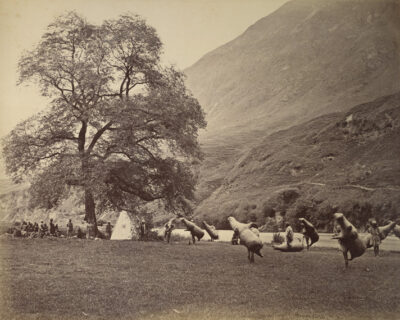Himachal
History
This is How Kullu-Manali Looked Like 200 Years Ago
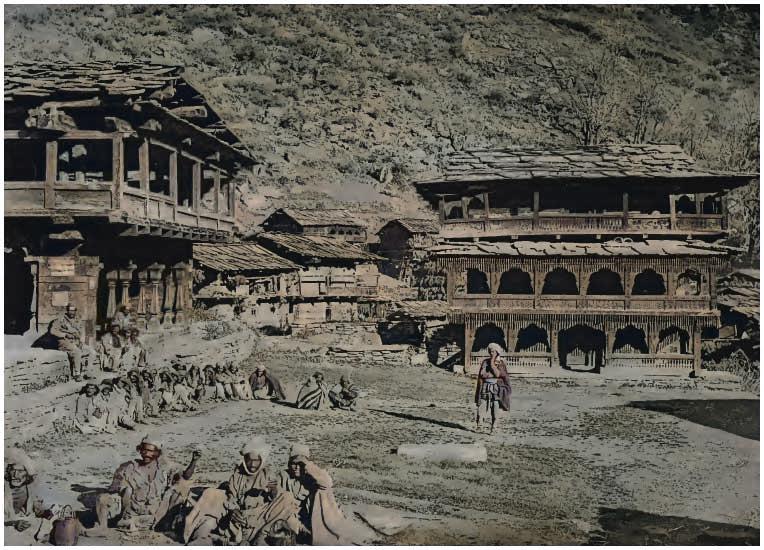
How was it like travelling to Kullu-Manali almost 200 Years Ago? Here is a glimpse of Kullu, that existed in the 19th century, through some rare black and white photographs clicked by the travellers, who were the first ones to explore the Western Himalayas…
Kullu-Manali in Rare Black & White Photographs | Video
Watch how Kullu-Manali looked like more than 200 tears ago in this video.
Imagine, you are travelling to Kullu-Manali some two centuries ago. You cross one of the few mountain passes on foot, most likely Jalori Jot, to enter the valley from Shimla side.
In front of your eyes lies the stunningly beautiful, completely wild and mostly unexplored snow-capped mountains and lush green valleys.
You walk in the daytime and spend the nights in tents. There are few Dak bungalows on the way but they are meant for the British Sahibs. There is a constant danger and fear of the wild animals, who can leap out on you anywhere, anytime.
You are surrounded by wilderness for miles and miles around. For an area of 6000 square miles of Kullu, Lahaul Spiti and Seraj, there are only one lakh or so inhabitants.
You hardly come across any soul on your way and the ones you meet in the villages are either suspicious of you or just curious in your camera kit, which weights at least 10 kg and is being carried by a porter.
There are some wooden bridges to get to the other side of the rivers but mostly you cross the gushing waters riding inflated buffalo skins or mussucks…
Here is more of Kullu and Manali from the eyes of those who set foot here first:
Chehni Kothi
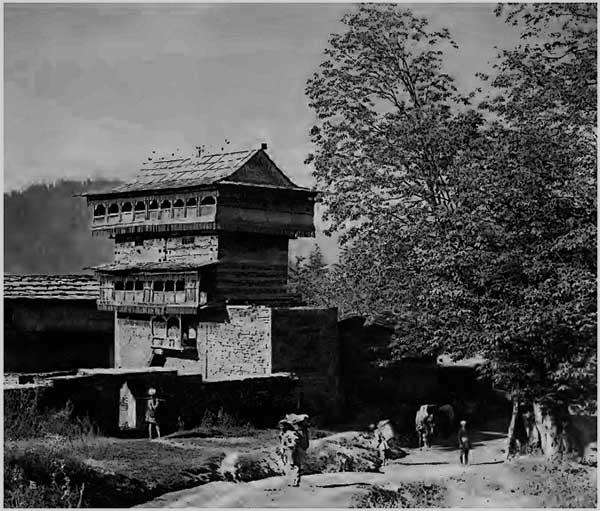
This is one of the fort temples at Chehni Kothi village near Jibhi in Banjar. Most travellers, who crossed Jalori Jot mountain pass to enter the Kullu valley would stay in this beautiful village for a while. Such fort temples acted as watch towers besides providing shelter during war. This photograph was clicked by F Gore, who had travelled all over Kullu in the latter half of the 19th century.
Bajaura
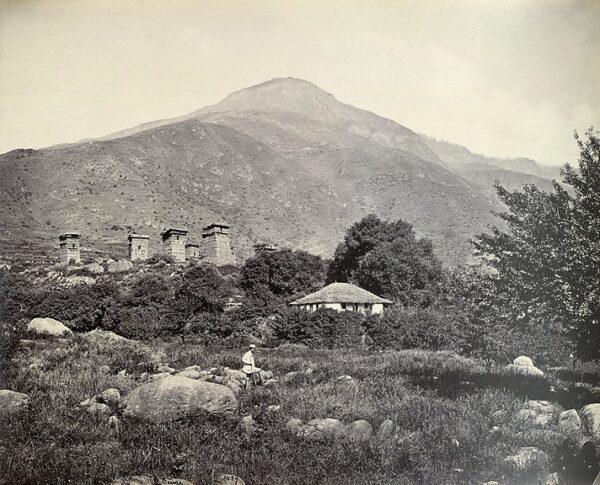
This old photograph is of Bajaura, the first town on entering Kullu district from Mandi side on national highway. The five visible tall structures are forts and the house in the foreground belonged to a tea planter. During the British days there were many tea gardens in Kullu including in Bajaura and Raison village.
In the old days Bajaura was a fortified and an important place because the main trade route from the plains entered the valley here only after crossing the 6760 feet Dulchi Pass, the lowest of the passes leading into Kullu and the only one which is not snowbound in winter.
Mussucks
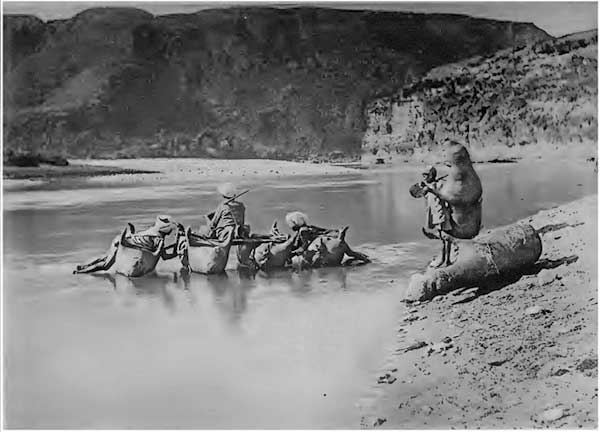
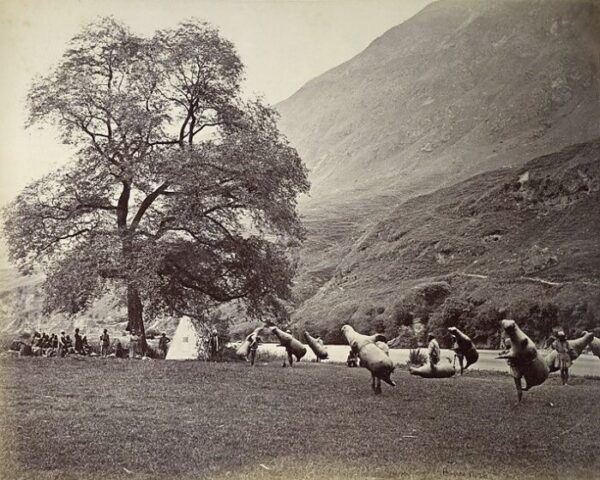
In the absence of bridges, locals used to cross rivers on inflated buffalo skins or mussucks. The mussucks were widely used to get to the other side of the Beas in Bajaura, Nagwain and other places. It was after the Britishers took control of Kullu in 1846 that many suspension bridges were built on the main rivers. The second photograph is clicked by Samuel Bourne, a British photographer who had set up a photo studio in Shimla in 1863.
Sultanpur
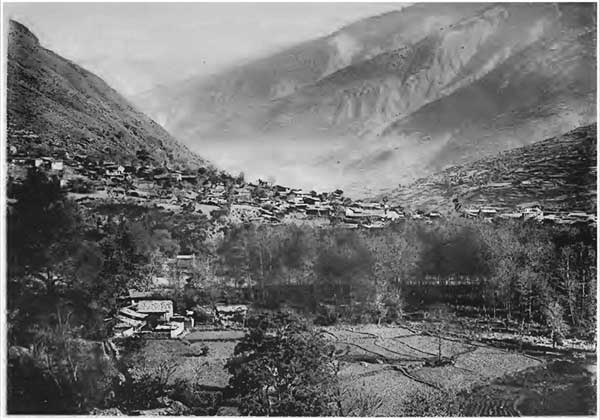
This is Sultanpur, the erstwhile capital of the Kullu princely state. This place still has the palace of the erstwhile royalty of Kullu. Naggar used to be the capital of Kullu before it was shifted to Sultanpur by Raja Jagat Singh in 1660.
Kullu
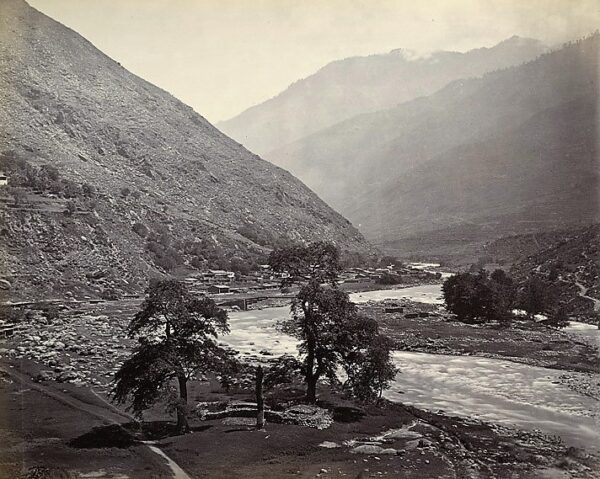
An old and rare photograph of Kullu. This photograph was taken by Samuel Bourne from Sultanpur. There are few houses and shops situated on the bank of Beas. Those who opened shops in Kullu during the British days were the first traders to have migrated to this place

It’s harvest time in Kullu. Four men can be seen thrashing the maize with some musicians on the left giving them encouragement with their music.
Naggar
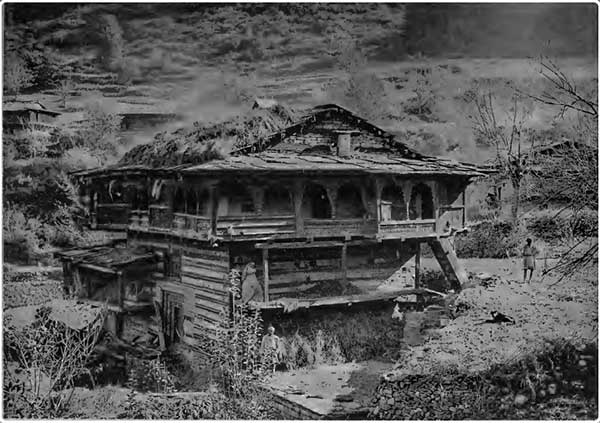
A wood-and-stone-built house in Naggar. These days such houses in Kullu have become a rarity.
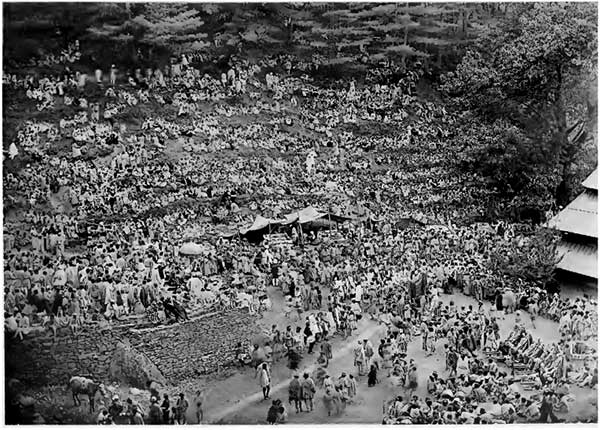
An old photograph of crowds at a fair in Naggar. Kullu is known for its fairs. Almost all the important villages of the district used to hold fairs with Dussehra being the biggest of them all. The tradition of holding fairs continues even today.
F Gore writes in Lights and Shades of Indian Hill Life that “The sound of the distant drumming, accompanied by ear-piercing trumpet blasts, announces the approach of the village gods to take part in the Nagar mela, or fair. On every path are to be met brightly dressed groups of women in all colours, and men gaily adorned with flowers, hastening to the rendezvous, for the mela is dear to the Kulu heart.”
Malana
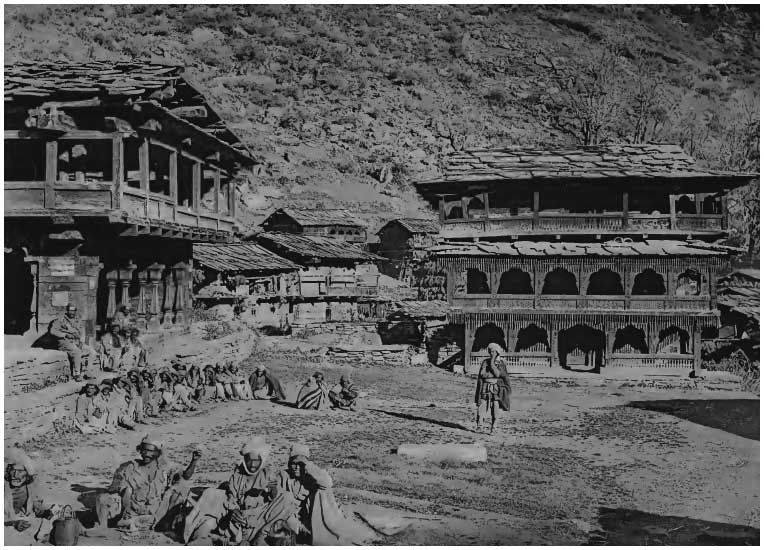
This is Malana village. The villagers are sitting in the sun with some hand-spinning the wool in front of the Jamlu Rishi temple. Malana is known for its unique culture, democratic institutions and the legend that its inhabitants are the descendants of the soldiers of Alexander the Great. In January 2008, half of the village including the temple was reduced to ashes in a devastating fire. The temple was rebuilt.
Manikaran
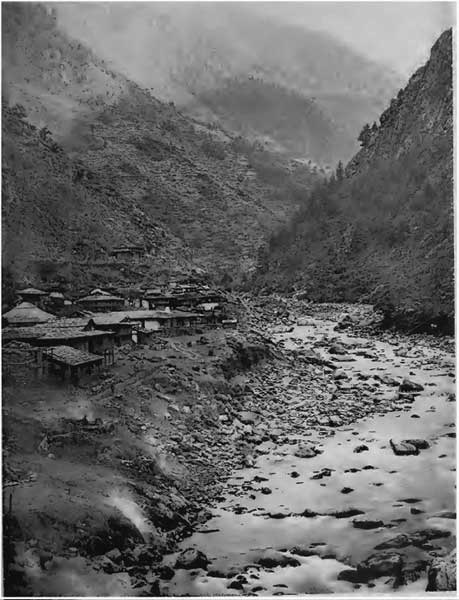
This is how Manikaran looked like on the bank of Parvati river. Manikaran was known for its hot sulphur springs right from the beginning.
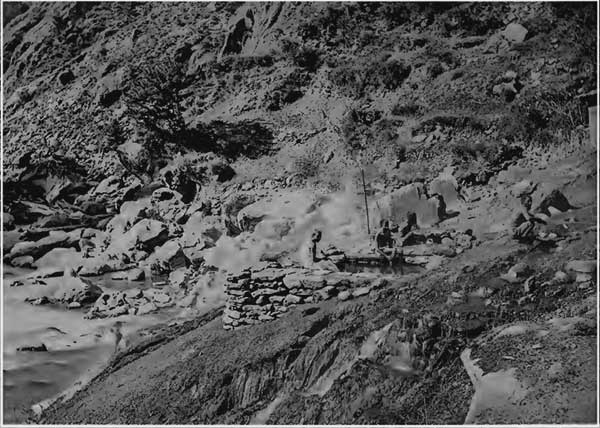
And here are the famous hot springs of Manikaran in the old days. Some kids seem to be having a day while enjoying their hot bath.
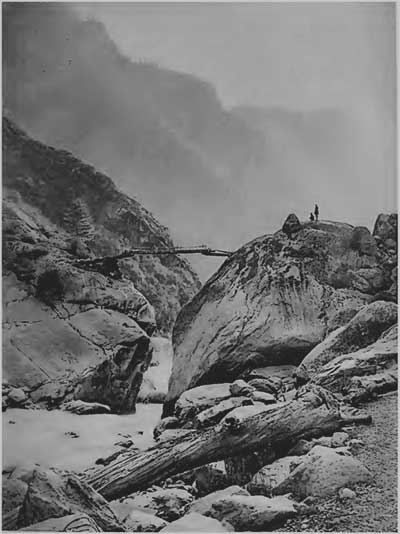
A wooden bridge near Manikaran. Crossing it must have been a little scary. No longer such bridges are there.

Some kids playing cricket in Manikaran. This photograph was taken in the 1890s. Seems like the game was popular in such a remote corner of the world even then.
Deity
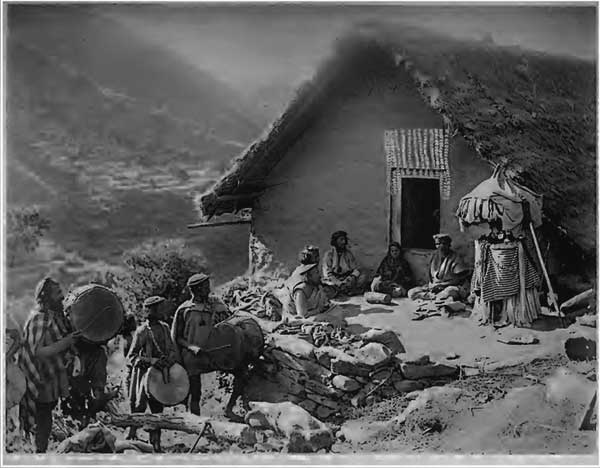
Villagers around a deity in front of a house in Kataula village.
Manali
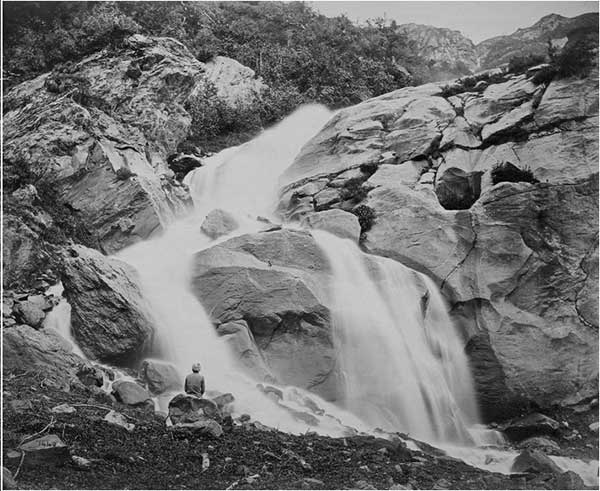
This is the photograph of a waterfall above Prini village, near Manali. It was clicked by Samuel Bourne in 1866.
Hamta Pas
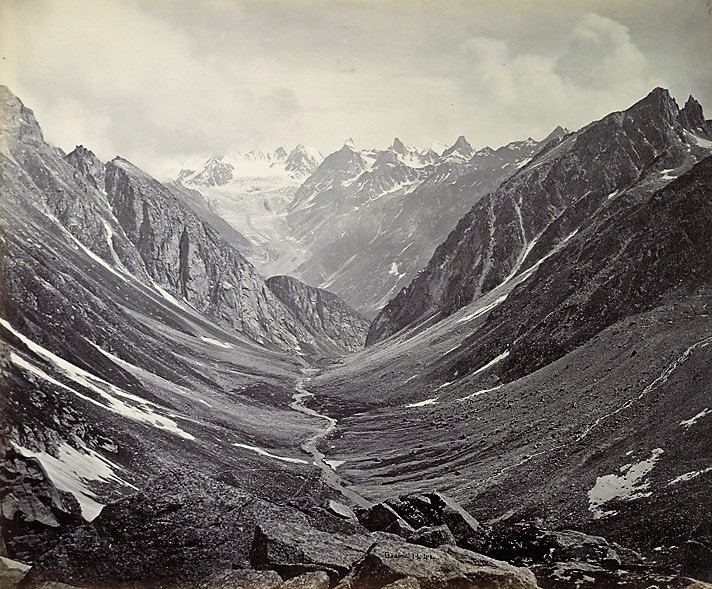
This is a photograph of the Hamta Pass (also spelled as Hampta), the high mountain pass that connects the Kullu valley with the neighbouring Lahaul & Spiti. Originally a shepherd route, this trek was first made popular by the Britishers towards the late 19th century.
Kullu Women
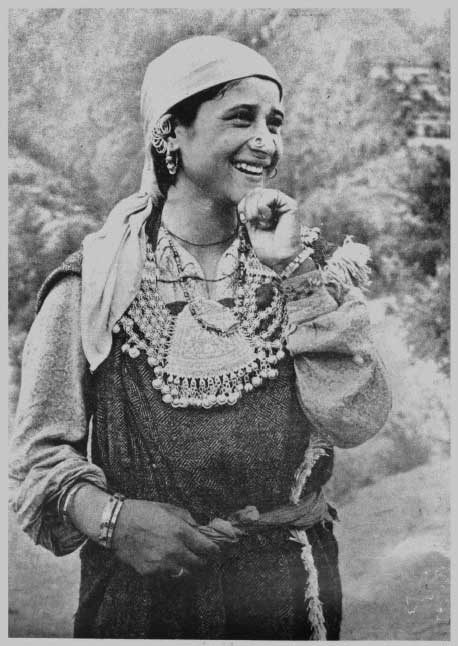


And these are the photographs of Kullu women in the 19th century. According to F Gore, who took the photograph, “The women, in strange contrast to those in other parts of India, were not at all shy, and were quite ready to stand and have their pictures taken. Some of them were quite good-looking.”



